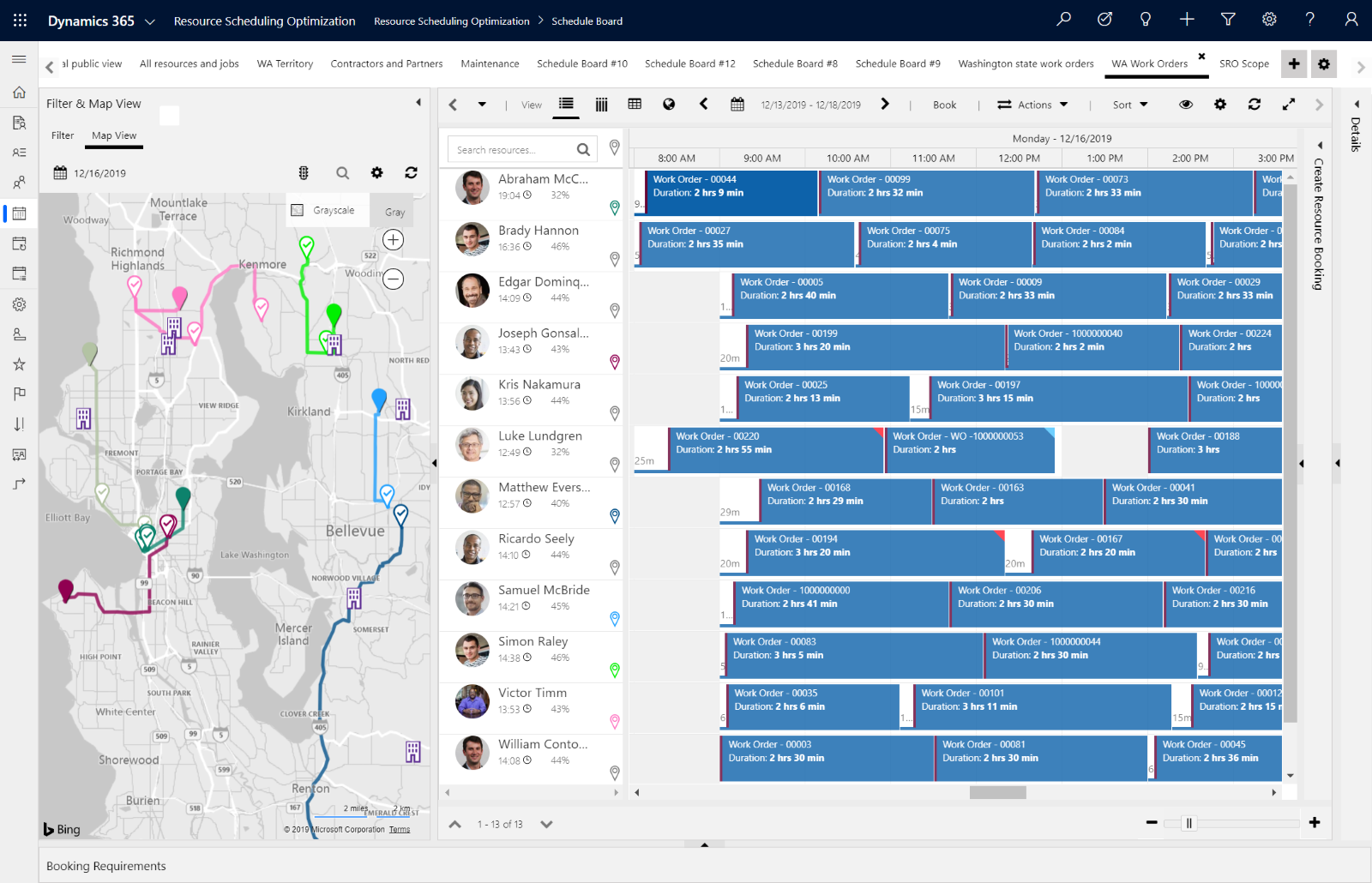Assistant Manager - SEO
Subscribe to the newsletter
projects. They are instrumental in optimizing project efficiency, meeting project deadlines, and ensuring the successful execution of project objectives. Furthermore, resource allocation and scheduling have far-reaching implications across various aspects of an organization, including cost control and customer satisfaction, making them indispensable components of efficient operations, project management, and field service management.
For organizations using Dynamics 365 Field Service, the Resource Scheduling Optimization feature provides a powerful solution for streamlining the scheduling and management of field service resources, including technicians, vehicles, and equipment.
This blog explores how to get started with Dynamics 365 Field Service resource scheduling optimization, its benefits, and guidance on how to enable this feature in your D365 Field Service environment.
Overview of Resource Scheduling Optimization in Dynamics 365 Field Service

Resource Scheduling Optimization automatically assigns tasks to the personnel, facilities, and tools most qualified to finish them. It also helps arrange cases for customer service representatives or work orders for field technicians. Depending on how you use Dynamics 365 Field Service, you can also cover other scenarios.
For field service organizations, resource scheduling optimization is a more sophisticated scheduling method. This add-in can schedule multiple jobs at once while the schedule board and the schedule assistant assist dispatchers in scheduling a single job. It reduces travel time and optimizes the use of resources. The requirements of the task and the distinctive qualities of the resources are also considered during resource scheduling optimization.
How does Dynamics 365 Field Service resource scheduling optimization work?
Resource scheduling optimization in Dynamics 365 Field Service is a refined implementation of the well-known “traveling salesperson problem”: What is the shortest route that visits every city and returns to the origin city, given a list of cities and the distances between each pair of cities?
A substantial part of the Resource Scheduling Optimization computation involves this mathematical issue and its resolution. The add-on does more than just calculate the quickest paths. It also considers roles, skills, territory, preferred resources, priorities, time windows promised, and other factors.
The following steps explain how it works:
- Make a list of all the tasks that need to be finished. Jobs are typically project tasks, work orders for remote service, or cases for onsite service.
- List the resources needed for each task along with the deadline for completion. For instance, if you have a work order that needs to be finished by the end of the week, you might need someone nearby who is skilled in repair.
- Select a list of resources that meet the requirements to be added to your list of open positions. Every resource has unique characteristics, such as type, location, role, and skill set.
- Execute Resource Scheduling Optimization on a workflow-triggered, ad hoc, or scheduled basis. Its operation may vary based on its scheduling. It may function differently for work orders than for cases, or differently for jobs in the US compared to jobs in Canada.
- The list of resources and the job requirements are used during the run to create an ideal schedule that is shown on the schedule board.
- Dispatchers can make any necessary adjustments using the interactive schedule board and schedule assistant after the run is finished.
How to enable Resource Scheduling Optimization?
Follow these steps to enable Resource Scheduling Optimization in Dynamics 365 Field Service:
Step 1: Navigate to Resource Scheduling Optimization >> Administration>> Scheduling Parameters.
Step 2: Select the “Connect to Maps” option under the General tab. The configuration establishes a link between the company and the Bing Maps service that the schedule board utilizes. To enable this setting, you must have the role of system administrator.
Step 3: Choose Resource Scheduling Optimization from the tab.

- Select “Yes” to Enable Resource Scheduling Optimization.
- If necessary, set the Default Goal. Resource Scheduling Optimization interactions through the schedule board are accelerated by the use of a default optimization goal. The way the engine optimizes data is defined by it. Users are still free to select other objectives.
Benefits of Resource Scheduling for optimizing field service performance
Because manually scheduling several jobs takes a lot of time, automated scheduling is frequently necessary. Resource Scheduling Optimization in Dynamics 365 Field Service helps dispatchers match jobs and gives them more time to work on other projects. The benefits of using resource scheduling optimization for field service operations include:
- Scale your service offering: Makes it possible for dispatchers to oversee more resources, which enables the company to grow into new markets or service areas.
- Improve customer satisfaction: Increased productivity results in more consistent arrival and completion times and easily arranges for technicians to respond to emergencies.
- Technician efficiencies: Fitting more appointments into working hours drives revenue and reduces overtime costs. Inefficient time allocation is decreased when work orders and technician skills are matched.
- Reduced travel time: By making sure your technicians are following turn-by-turn directions and the shortest route possible, you can cut down on fuel use and vehicle wear and tear. The savings outweigh the additional license costs.
- Increased customer retention: Meeting customer service obligations and avoiding service level agreement fines are two benefits of prioritizing higher-priority work orders.
Final words
Resource Scheduling Optimization is a paid add-on, built on top of Universal Resource Scheduling’s (URS) entities. URS is available to companies using Dynamics 365 Field Service, Dynamics 365 Customer Service, or Dynamics 365 Project Operations. To use resource scheduling optimization to schedule sales opportunities for your sales reps automatically, you will need Dynamics 365 Field Service, too.
Maximize project efficiency, meet deadlines, and enhance customer satisfaction. Get started today and experience the benefits of seamless resource management. To enable Resource Scheduling Optimization on Dynamics 365 Field Service, Dynamics 365 Field Service implementation, or explore Dynamics 365 Field Service licensing, contact our certified D365 consultants at marketing@Confiz.com and transform how you handle field service resources.



